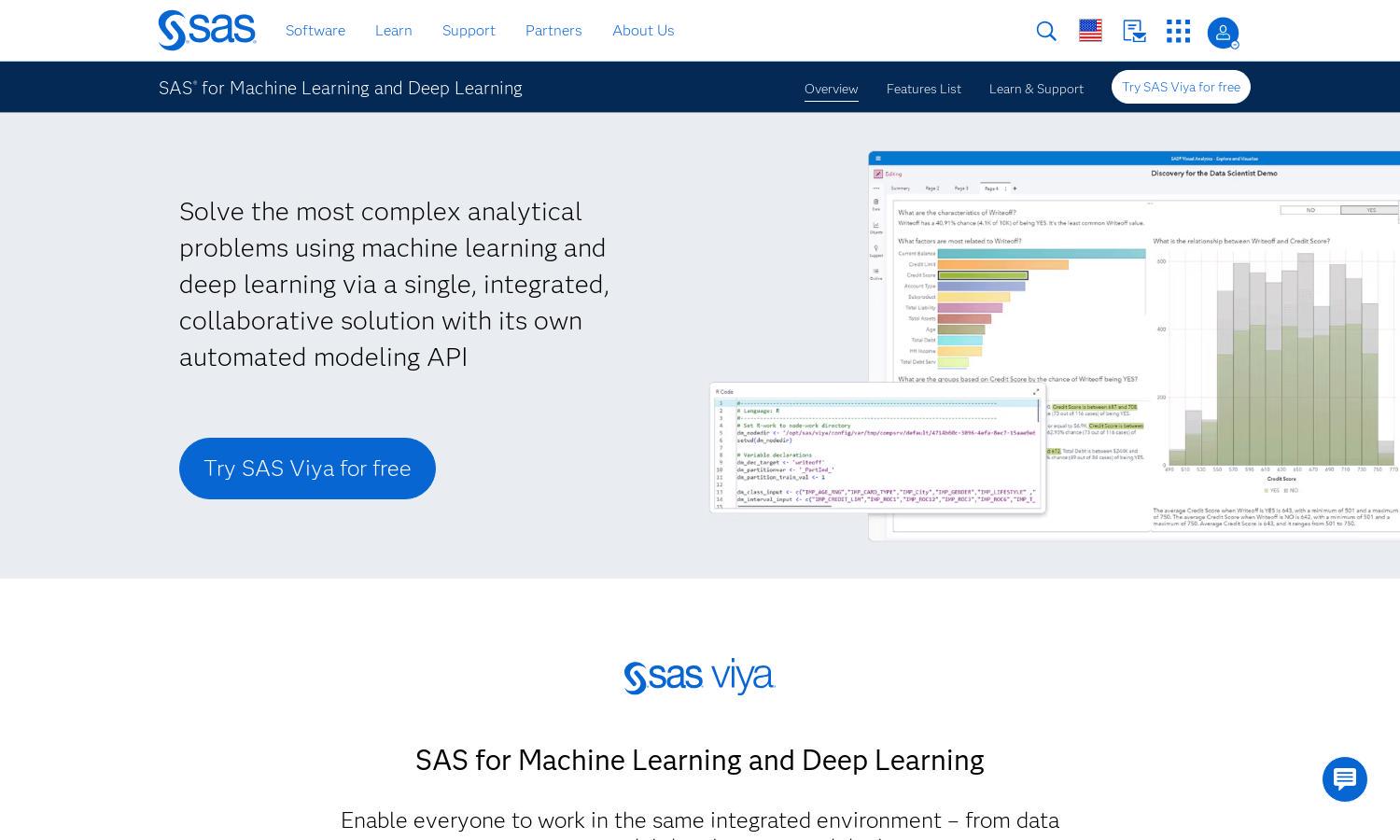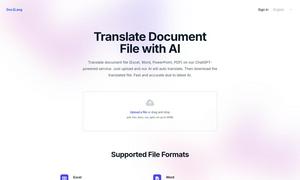SAS

About SAS
SAS for Machine Learning and Deep Learning is designed for data scientists and business analysts, providing an integrated platform to streamline the analytics life cycle. Its automated modeling API enhances collaboration, while natural language generation simplifies report interpretation, making advanced analytics accessible for all users.
SAS offers flexible pricing plans for Machine Learning and Deep Learning, catering to various needs. Each tier provides access to essential features that enhance productivity. Upgrading allows users to leverage comprehensive analytics tools and faster solutions, ensuring that organizations gain maximum benefit from their investment in SAS.
SAS for Machine Learning and Deep Learning features a user-friendly interface that promotes seamless navigation. Its intuitive layout incorporates smart visualizations and automated insights, ensuring users can easily interact with data and generate meaningful reports, thus enhancing their overall experience on the platform.
How SAS works
Users start their journey with SAS for Machine Learning and Deep Learning by signing up for a free trial. After onboarding, they can navigate the integrated environment to prepare data, generate insights, and develop machine learning models. The collaborative features enable team members to leverage advanced analytics easily and efficiently, ensuring robust and reproducible results throughout the analytical process.
Key Features for SAS
Automated Insights Generation
The automated insights generation feature of SAS for Machine Learning and Deep Learning enhances user productivity by providing actionable project summaries and key variable identification. This unique functionality allows users to interpret complex models using natural language, simplifying analytics for data scientists and business analysts alike.
Deep Learning with Python Integration
SAS for Machine Learning and Deep Learning seamlessly integrates with Python, empowering users to leverage high-level APIs for deep learning tasks within Jupyter notebooks. This feature enhances functionality, allowing data scientists to utilize open-source algorithms and collaborate effectively using their preferred coding languages.
Collaborative Environment for Teamwork
The collaborative environment of SAS for Machine Learning and Deep Learning promotes team efficiency by enabling users of varying skill levels to work together seamlessly. This feature supports communication and documentation throughout the analytics life cycle, ensuring all team members can contribute to data-driven decision-making effectively.
You may also like:








